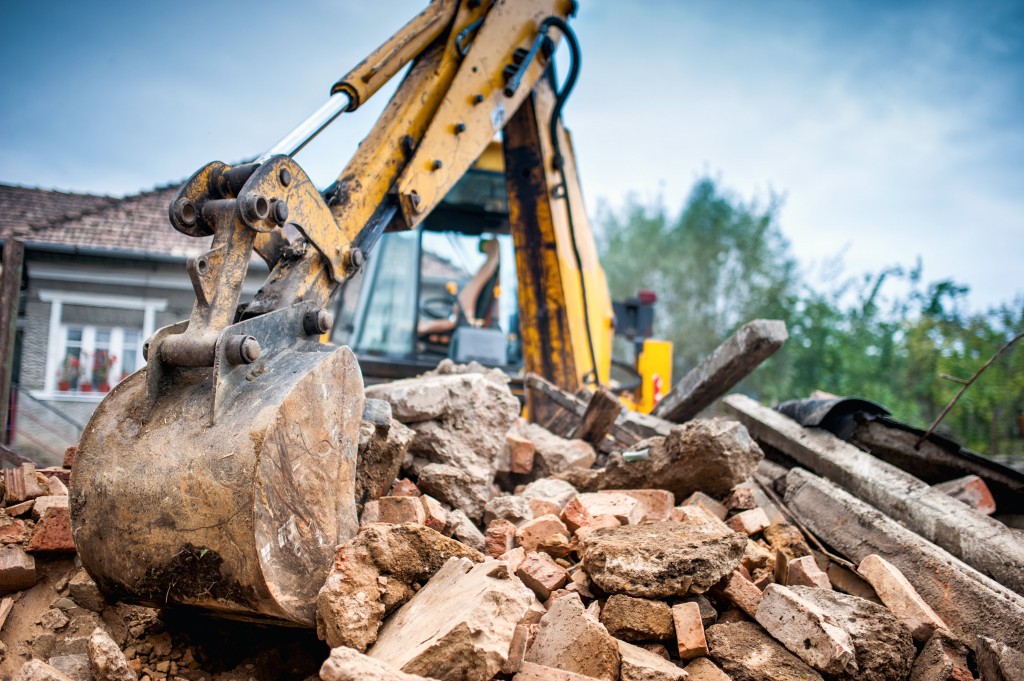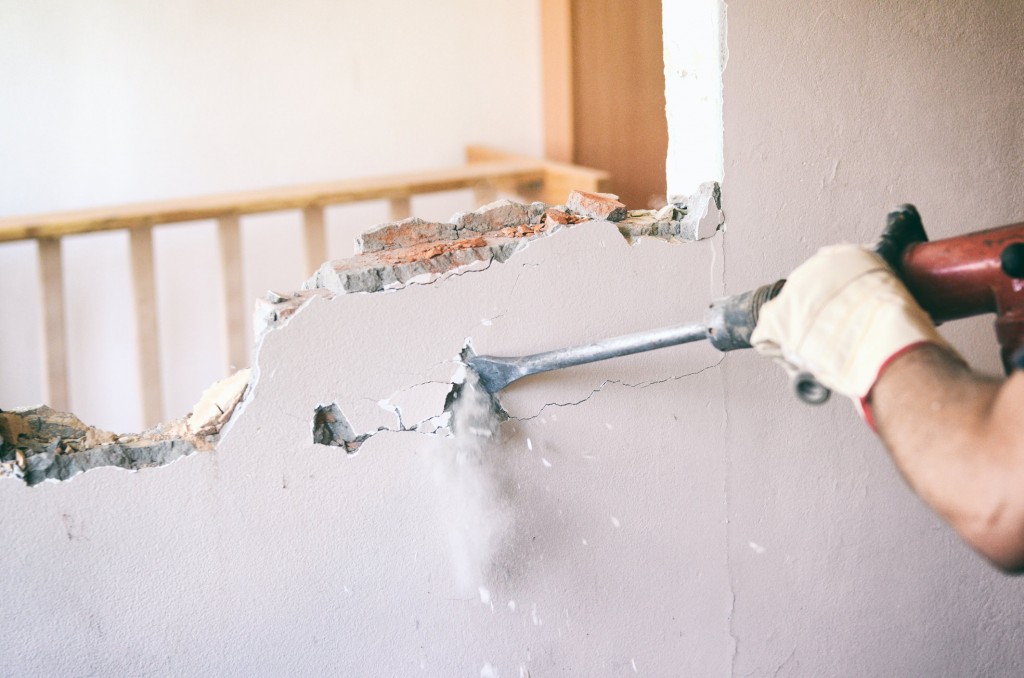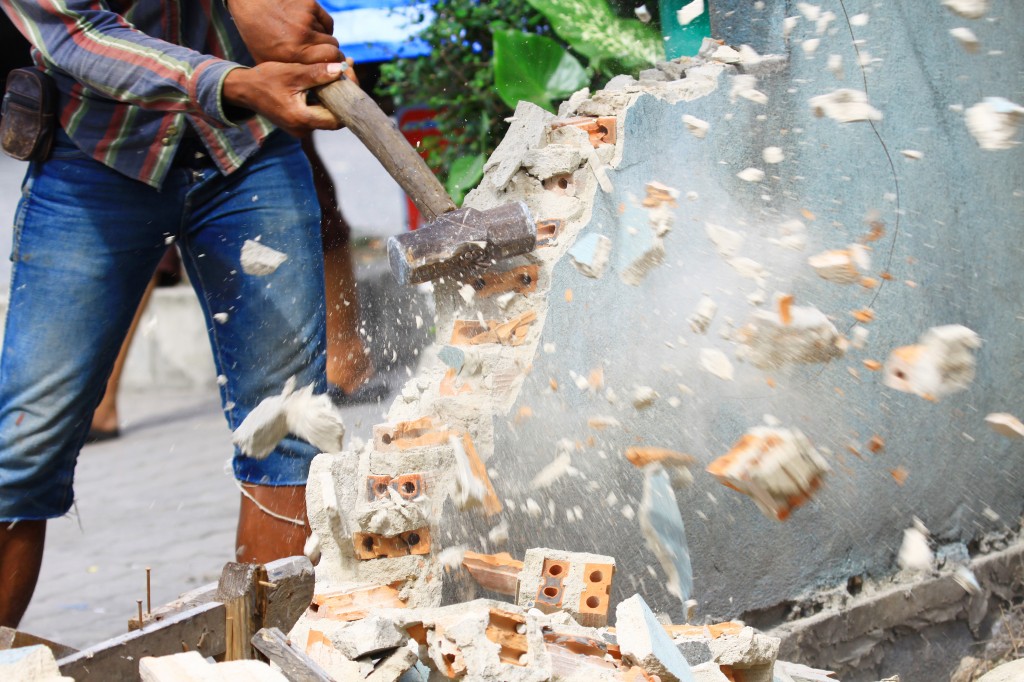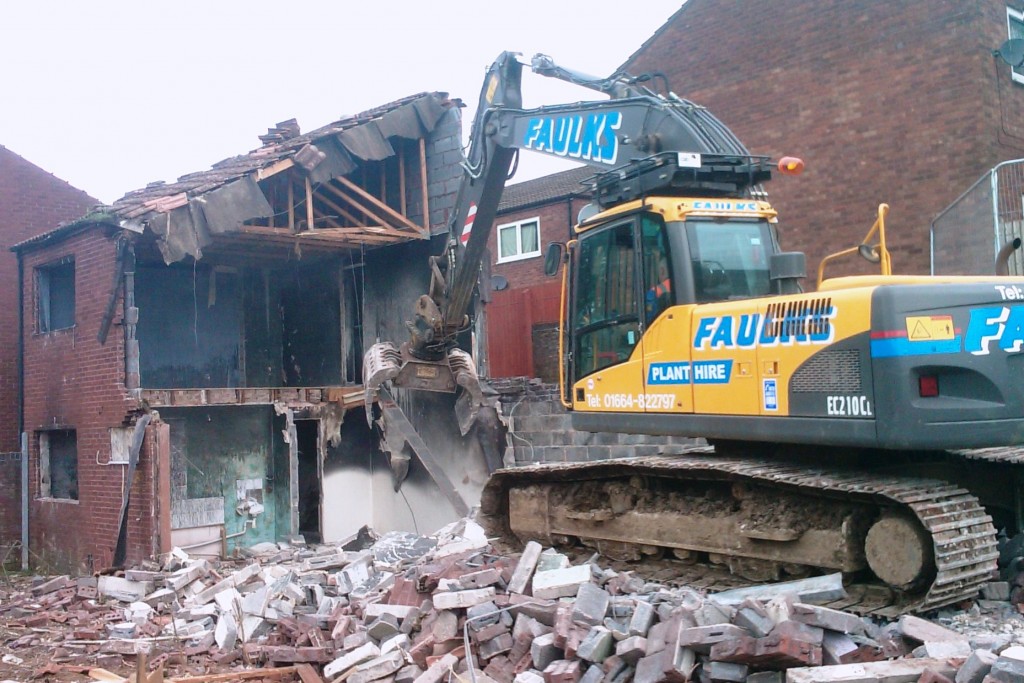Demolition of Buildings
Demolition work can be a necessary part of any building project. Whether it’s taking down a section of wall to make room for something else, or demolishing a whole structure completely, sometimes demolition is needed to move your project forward. But, in some cases, you may not have fully considered everything that goes into a demolition before beginning work, and this could have disastrous consequences. After all, demolition is the most high-risk activity in the construction sector.
So, as a leading construction plant hire company, offering machinery for hire in areas across West Midlands and East Midlands – including plant hire in Birmingham, plant hire in Cambridgeshire and Lincolnshire – in this article we discuss what do you need to consider before you begin a demolition project?

Types of Demolition Methods
There are different types of demolition, including:
- Explosives
The use of explosives in demolition allows for rapid completion where other methods might be too dangerous or slow. This method requires enforced exclusion zones as well as pre-demolition and post-demolition structural inspections over a substantial radius.
- Hand Demolition
For smaller scale projects, or for site constraints such as pedestrian access or adjacent structures, hand demolition would be used. This involves the progressive demolition of a building by operatives using hand tools.
- Machine
The most frequent method of demolition is with the use of machines, which reduces the need for man handling or for people working at height. Machines that are used in this method can include a swinging ball on a crane, a wire rope, and a machine with a hydraulic pushing arm.
- Other Methods
There are a few other methods of demolition including gas expansion burster, hydraulic expansion burster, thermal reaction, thermic lancing and drilling and sawing.

Demolition Risk Assessment
All demolition projects, regardless of their size, come with many risks. As a result, all risks and potential hazards should be fully assessed before any work begins to ensure optimum safety is maintained throughout the entire process. Any mistakes made can seriously damage the structure of a building, so any demolition work should be assessed by an experienced professional. General procedures that should be followed before a demolition include:
- Site compound and security set-up.
- Intrusive pre-demolition surveys (such as asbestos survey for demolition, structural survey, hazardous materials surveys, etc).
- Isolation of utilities and removal of meters.
- Disconnection of utilities.
- Asbestos removal (in accordance with the Control of Asbestos Regulations).
- Soft strip (taking the structure back to construction materials including the removal of windows and door frames).
- Superstructure demolition with special measures as constraints demand, such as de-build or protection of adjacent structures.
- Processing of superstructure arisings.
- Slab and foundation demolition.
- Processing of arisings.
- Site finishes as required.
Depending on the nature of the demolition, it will carry different risks. For example, if you’re carrying out an explosion, then this requires extensive use of the police to enforce exclusion zones as well as pre- and post-demolition structural inspections for a substantial radius. For small scale projects, or when the demolition has to be carried out in a more sensitive way due to site constraints, the demolition will most likely be carried out by hand.

Demolition Tips
- Time Constraints
If you have to do a project in a hurry for any reason, then demolition is not advised. It is a precarious process at the best of times and so should be undertaken with care, slowly, and under best building practices. A rushed job carries many risks. So, with that in mind, you should plan out any demolitions that you may deem necessary in order to have the time to do the job well.
Projects should be undertaken with great care – if demolition is to take place or not – so time assessment should be important for all of your projects.
- Equipment
Carrying out a big project such as a demolition requires the right tools. You could do this project cheaply, but you would regret this decision in the long run if the end result was not to a standard you would have preferred. Getting the right equipment can make the project smoother, higher quality and leave you with a better finish at the end of the project. The more money you insert into a project, the higher end results you are likely to achieve.
Demolition and Construction Waste
When undertaking demolition work, a lot of construction waste is produced. Waste needs to be managed in a safe and environmentally sound way and is typically classified as either hazardous or non-hazardous.
Hazardous waste:
- Insulation and materials containing asbestos or other hazardous substances.
- Concrete, bricks, tiles and ceramics (alone or in mixtures) containing hazardous substances.
- Treated wood, glass, plastic (alone or in mixtures) containing hazardous substances.
- Bituminous mixtures containing coal tar.
- Coal tar and tarred products.
- Metals containing hazardous substances.
- Cables containing oil, coal tar and other hazardous substances.
- Soil and stones and dredging spoil containing hazardous substances.
- Gypsum materials containing hazardous substances.
- Un-used or un-set cement.
- Paint or varnish remover.
- Paint cans.
- Adhesive or sealant containers.
Non-Hazardous Waste:
- Insulation materials.
- Concrete, bricks, tiles and ceramics containing no hazardous substances.
- Untreated wood, uncontaminated glass and plastic (excluding packaging waste).
- Bituminous mixtures.
- Metals and cables (copper, aluminium, lead, iron, tin etc.)
- Soil, stones and dredging spoil.
- Gypsum materials.
You are legally required to properly manage your waste. You should use the waste management hierarchy that helps you to reduce, reuse and recycle waste before it is disposed. By effectively reusing or disposing of waste, you reduce your negative environmental output, save on costs, and ensure you maintain high levels of health and safety for workers and members of the public.

Is the Demolition Work Necessary?
A final, but important question you should ask yourself is whether the demolition work is necessary in the first place. Demolition should be the last case scenario, something that you do when nothing else will seemingly work to create the same results. If you can determine an outcome for the project without the need for demolition then this is, ultimately, the preferred option.
This is especially something that you should consider if you have little experience with demolition and are not fully aware of best practices. Depending on the building, you may need special measures to ensure the integrity which turn into more hassle than they are worth in the long run.
If you’re looking for plant hire in Derby, Leicester, Staffordshire or anywhere in the West Midlands or East Midlands, contact us today to find out more, or browse our range of equipment on online.















